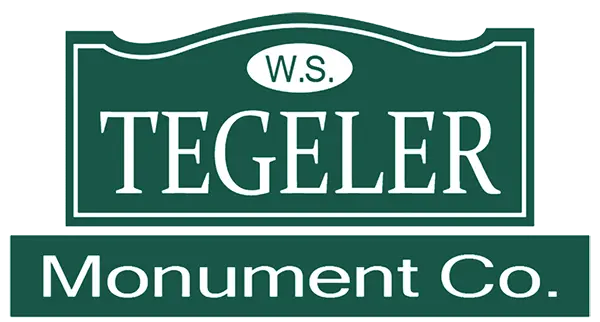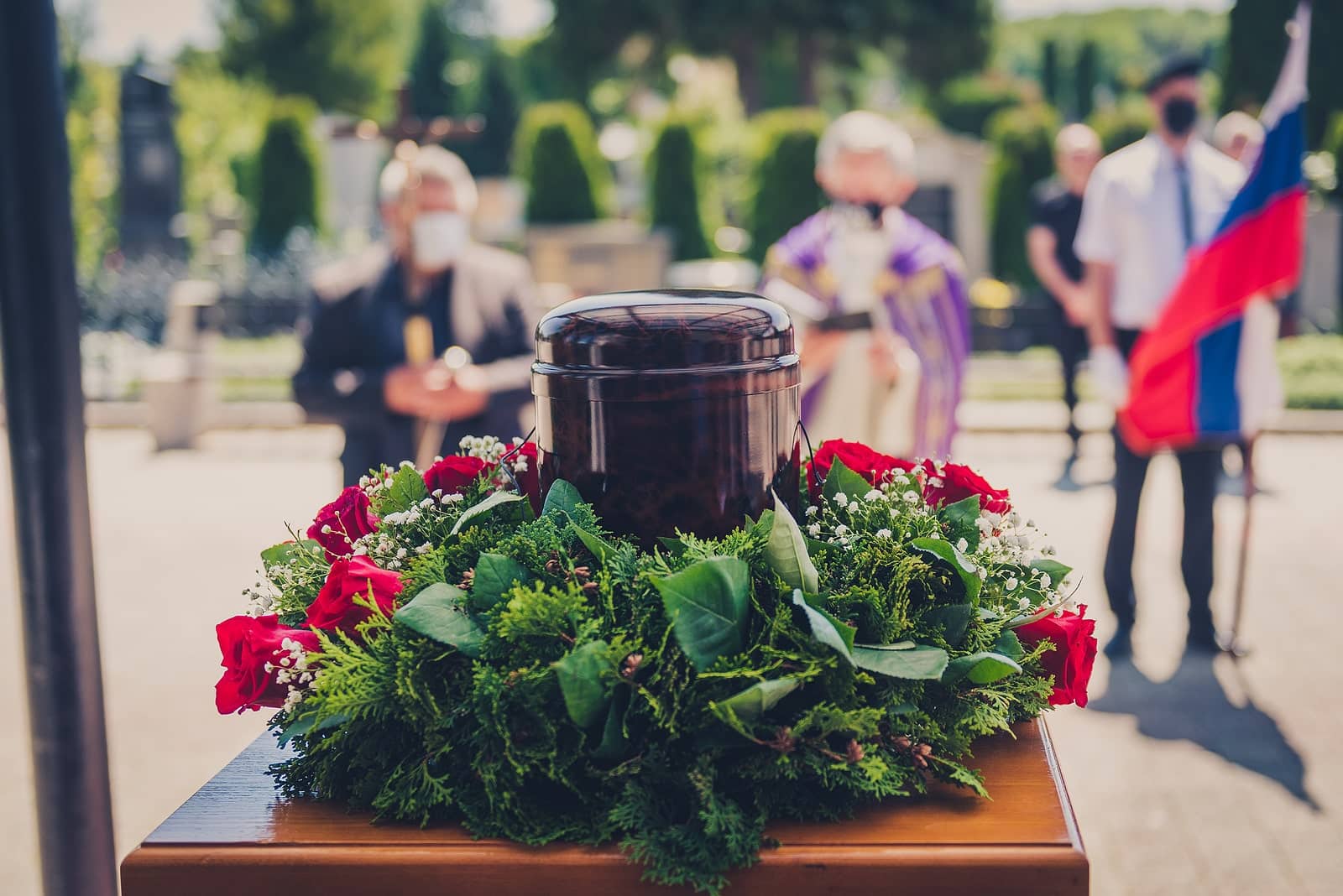Processing the passing of a loved one can be a difficult and emotional time. There are a lot of decisions that need to be made and steps to take after a loved one is gone, and it can be confusing if you don’t know where to start.
As part of this process, you’ll have to decide (if your loved one hadn’t already) whether you want a burial or a cremation. To help you through these decisions, we’ve put together a list of common questions and answers about burials and cremations.
Questions and Answers About Burials
If you’re considering a traditional burial, here are a few of the most common questions you may need answers to:
How Much Does a Casket Cost?
According to the National Funeral Directors Association (NFDA), the average casket costs about $2,000, though premium caskets can cost up to $10,000. The cost can depend on the material (for example, mahogany, fiberglass, wood, metal, or plastic), the interior lining, commemorative panels, internal lift hardware, and exterior features such as handles or ornamentation.
Will Certain Caskets Preserve a Person Better?
The purpose of a casket is to provide a dignified way to move the deceased before burial or cremation. Many families also choose to have a viewing where loved ones can say goodbye to the deceased prior to burial. No casket preserves a person forever, but some are built to withstand the elements for longer than others. For example, many metal caskets have a rubber gasket or feature meant to delay penetration of water into the casket. Work with your funeral home director to choose the best casket for your loved one.
How Do I Choose a Grave?
Choosing a final resting place for your loved one is an important decision because it gives friends, family, and loved ones a place to visit them. Start by talking with your funeral director about options in your area or close to home. Be sure they meet any requirements of your family’s religion, and understand any restrictions there may be on gravesite décor, the memorial service, or others.
How Do I Choose a Headstone or Memorial Marker?
The best way to choose a headstone or memorial marker that represents and memorializes your loved one is by working with a local monument company. At Tegeler, our expert designers can help you with any questions you have and can even create a completely customized monument for your loved one. This includes color, design, inscriptions, material and more, and we can help ensure it follows all the regulations for your chosen cemetery.
How Much Does a Burial Cost?
The cost of a burial can depend on the cemetery you choose. There are several fees and parts associated with the cost, such as the plot land, fees for the opening and closing of the gravesite, fees for permits and equipment, costs for other services or items purchased, a fee for maintaining your loved one’s burial site, and others. Cost can range from around $4,000 to more than $10,000.
How Long Does it Take for a Headstone to be Placed on a Grave?
First, it depends on how long your memorial takes to be completed, which depends on the availability of material, customization of the memorial, and how quickly approvals are made. It can also depend on the climate, time of year, and the weather. Typically, it takes three to four weeks for the headstone to be created and placed on top of the grave.
Do I Have to Have a Burial Service?
There is no requirement for you to have a burial service for your loved one. It’s up to their wishes, or how you would like them to be memorialized. A funeral and burial service is a great way to celebrate your loved one’s life and reflect on the happy memories with them, and can give family and friends a change to grieve and get closure. However, a full service is not necessary.
Is A Burial Service Different from A Funeral?
A funeral service typically takes place at a funeral home with the body of the departed present. This is a time for family and friends to speak about the deceased, reflect on memories, and offer condolences to the family. A burial service is usually held afterwards and is a short ceremony or service that is grave side as the coffin is lowered into the ground. It may include a short reading or prayer.
What Is Involved in A Cemetery Burial?
The first step is to find a cemetery and choose a type of plot. This can be a single plot, companion, family, or those for cremated remains. Once you’ve chosen a cemetery and determined the type of plot that is right for your loved one, you’ll purchase the burial plot. Then, you’ll work with the funeral home to choose a casket and plan a funeral and/or memorial service for your loved one.
If the burial service happens immediately after the funeral, the funeral director will guide family and mourners to the cemetery where a short burial service will take place at the designated plot. The casket will be set up above the grave, and flower arrangements or other tributes will be placed. Immediately following the departure of friends and family, the casket will be lowered into the grave and buried.
How Do I Know If a Burial Is Right For My Loved One?
If your loved one did not specify wishes to be buried or cremated, it’s up to those left behind to make the decision. This is a difficult question that only you and your family can answer. A burial is more costly, but it’s also more traditional and it gives the deceased’s loved ones a permanent place to visit whenever they may choose, which can be helpful during the grieving process. A burial also can take more time and effort to plan if you choose to have a service, but it’s a great way to remember and memorialize your loved one for years to come.
Questions And Answers About Cremation
If you’re considering cremation, here are a few of the most common questions you may need answers to:
What Do Cremated Remains Look Like?
Cremated remains have a coarse, sand-like consistency and can range in color from white-gray to dark gray.
How Much Do Cremated Remains Weigh?
This depends on the size of the person being cremated, but an average-sized adult’s remains will typically weigh four to eight pounds.
How Is Someone Prepared for Cremation?
Typically, the body is prepared the same way as it would be for a traditional funeral. The person is bathed, cleaned, and dressed, though there is no embalming required unless requested. Then, they are placed in the cremation container, which is typically a combustible casket-like container.
What Happens During A Cremation?
Once the deceased is prepared, they will be placed inside the cremation chamber and be naturally broken down into ash. Once the ashes are cooled, they are checked for any remaining impurities, which are removed, and then sent to a cremulator which refines them further. At this point, the cremation is complete and your loved one’s ashes will be transferred to the urn or container of your choice.
How Long Does Cremation Take?
The full cremation process can anywhere from a few days up to two weeks.
Can I Provide My Own Urn?
You can work with the funeral director to choose an urn that best represents your loved one, or you can provide your own urn. Some people choose to make an urn out of ceramics, paper mache, wood, or some other medium as a way to celebrate their loved one’s life.
Can I Watch the Cremation?
Yes, watching cremation is allowed, but specific guidelines depend on the rules established by your mortuary or crematorium. Each facility can make and enforce its own policies, so if this is important to you, be sure to ask up front if this is something you can do.
What Can I Do with Cremated Remains?
There are many things you can do with cremated remains. You can turn them into art or jewelry, turn them into a coral reef, put them into a vinal record, buy a tree urn, and even make a tattoo with remains mixed in the ink. You can choose to keep them displayed in a decorative urn, or you can scatter them. If you choose to scatter them, check with your individual state for any permits required or restrictions.
Can I Still Have a Funeral Service After Cremation?
Yes, you can still have a funeral service and even burial service after cremation, as some people choose to bury ashes in a cemetery plot. The service can be the same as a traditional funeral or burial service would be.
How Can I Be Sure My Family Receives the Right Cremated Remains?
All remains must be positively identified by a family member or loved one prior to cremation taking place. After this, an identification band is placed with the deceased prior to transport to ensure no confusion. This is fireproof and remains with the deceased throughout the whole process, even with the ashes you receive. There are a number of processes in place during and after the cremation to ensure you get your loved one’s remains back
Is A Burial or Cremation Right for My Loved One?
If your loved one left instructions before they passed, it’s best to stick to their wishes. If your loved one had religious or cultural beliefs, those should be taken into consideration. Some religions oppose cremation, while others embrace or even require it. Otherwise, it depends on the person and the desires of their family/loved ones.
Cremation without burial can often be cheaper, so if cost is prohibitive, that can be an option. Cremation is also more flexible because ashes can be kept in an urn, buried, scattered, or other options. A burial is more permanent, giving all friends and family a place to go to visit your loved one. Burials are also more traditional, especially when paired with a funeral and burial service.
It can be helpful to talk to family and friends of the deceased, as well as a funeral home director, to choose the best option and make planning seamless and less stressful.
Contact Tegeler Monument Company
If you are in need of assistance choosing a monument for a loved one, or would like to know more about our burial and cremation FAQs, contact Tegeler. We have decades of experience in helping families choose, design, and install beautiful custom grave markers and headstones in Maryland, Virginia, D.C., and beyond. Call (410) 944-0300 to learn more.


Comments are closed